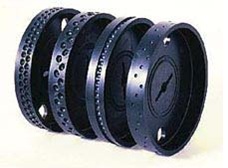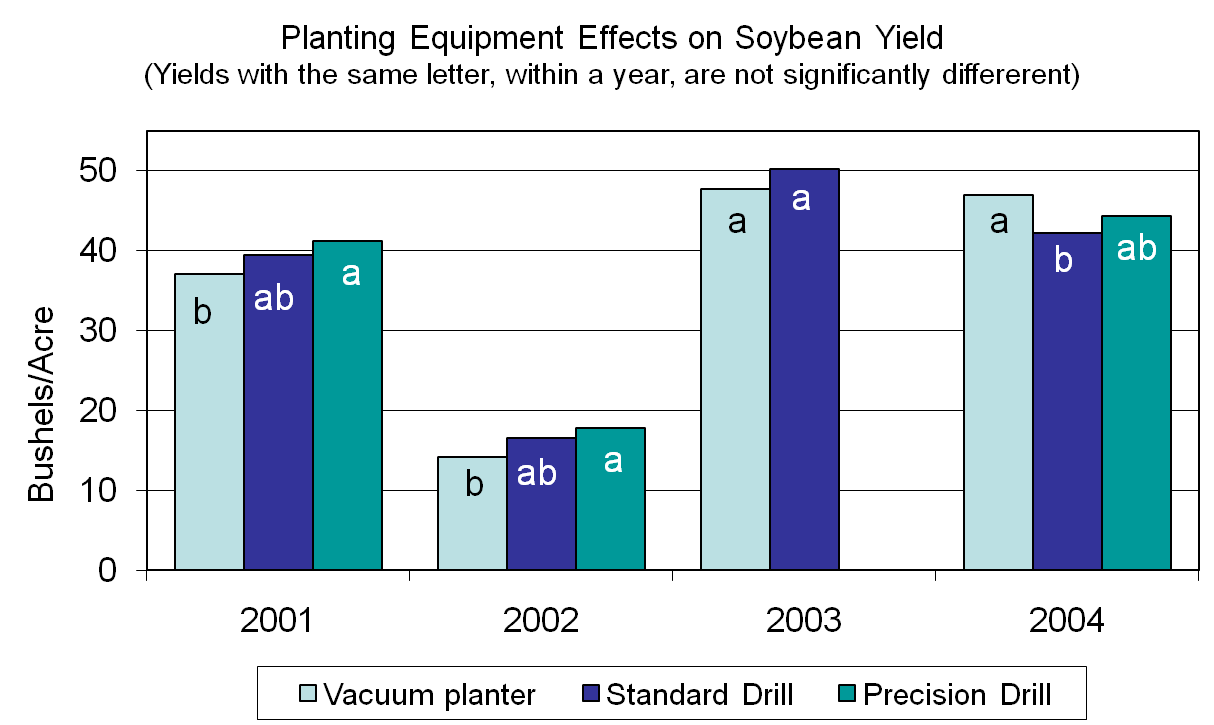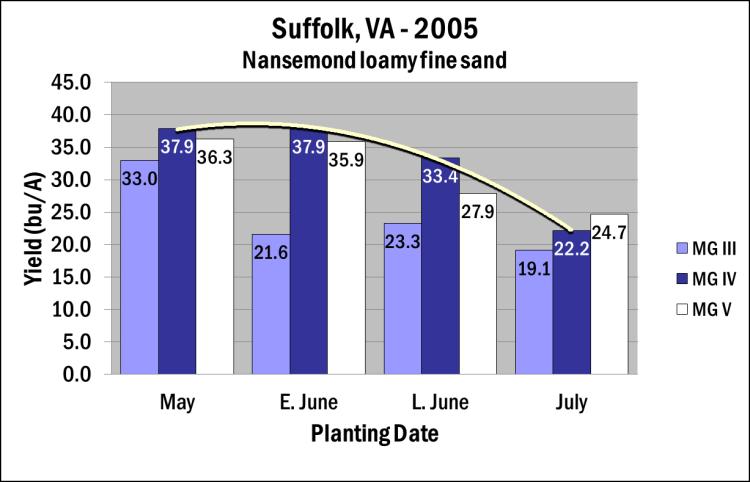Before the cost of soybean seed jumped with the introduction of the Roundup-Ready trait, soybean was planted at much greater rates than was needed for maximum yields. Back then, seed was cheap. It only cost a few dollars to insure adequate stands – even if only 50% of those seed emerged. Today, planting extra seed is a luxury that we can no longer afford, especially if the seed includes one or more of the many seed treatments now available. Furthermore, with better planters and drills that easily handle residue and place the seed at the proper depth, we tend to get better stands. But, just how low can we go? How many seed per acre does it take to maximize yield?
Over the past 8-10 years, I’ve collected a lot of seeding rate data on different soils throughout Virginia. The main conclusion from that research was that seeding rate recommendations were too high for full-season (May-planted) soybean and barely adequate for double-cropped (late June- to July-planted) soybean. Over the past three years, I’ve also collected quite a bit of data following a barley crop (early June planted) and I feel comfortable with relatively low seeding rates for this cropping system. My current recommendations are listed below. Note that the table lists the desired final plant population in plants per acre and the seeding rate calculations (in plants per row foot) are based on 80% emergence. Your final stand may vary depending on emergence. In general, for May plantings, 80,000 plants per acre are adequate for all row widths.
Don’t Widen Rows to Save Seed. I’ve heard talk of widening rows to save seed. It’s true that if you move back to 30 or 36” row spacing, you’ll not use as much seed. That’s because you can only crowd so many plants into a row and get a benefit. Basically, too many plants within the row are competing with each other. But, you’re losing the benefit of narrow rows, which is, once again to capture 90% or more of the sunlight by flowering and early pod development. Sure, it’s possible that in a good year on a good soil, you’ll be able to meet these requirements. But over time, it’s not likely. On the other hand, row spacing of 15 to 20 inches should provide adequate canopy if planted in May through mid-June. Keep in mind that the later you plant, the greater the benefit from narrow rows. Also, narrow rows benefit early-maturing varieties more than late maturing varieties. And, as I’ve alluded to earlier, there is less of an advantage to narrow rows on more productive soils. Therefore, some fields will likely respond more to narrow rows than others.
Here’s a good way to check and see if your row spacing is narrow enough for a particular field. This summer, when the soybean crop is in full bloom, walk your fields. As you’re walking, look into the canopy. Can you see any ground? If so, then you’re rows are not narrow enough. If you’re already planting in narrow rows, then consider raising your seeding rate. This will insure that you’re meeting the leaf area requirements.
Uniform Stands Matter. We generally think that soybeans will compensate for poor stands, wide rows, and/or gaps within rows. Soybean will compensate much more than other crops. However, I think that uniformity of stand within the row matters. The more uniform the spacing between plants within a row, the greater the yield potential. This was shown with double-cropped soybean in research conducted in Virginia that compared a 15-inch planter with a standard drill and a drill that uniformly distributes the seed in the row (see figure below). I’ll refer to this drill as a “precision drill.” Details of the drills used are shown below.

Type, make and model, seed singulation method, and row spacing of seeding equipment used in this study.
Stand uniformity with the precision drill was equal to the vacuum-meter planter and better than the standard drill. Yield results are also shown below. Soybean yield with the standard drill was equal to the vacuum-meter planter in three of four years and less than the vacuum-meter planter in one year. Soybean yields were greater when planted with the precision drill than when planted with the vacuum-meter planter in 2 of 3 years, and averaged 10% over three years of study.




